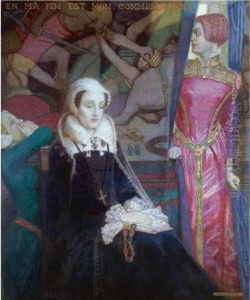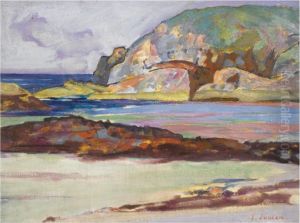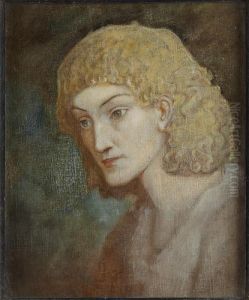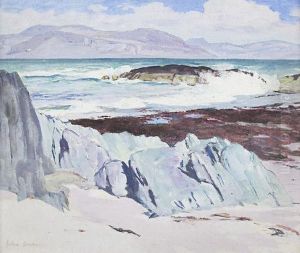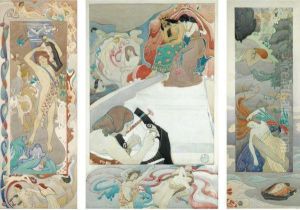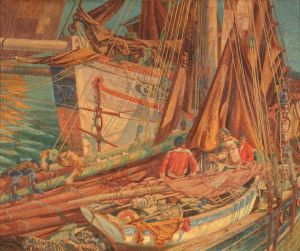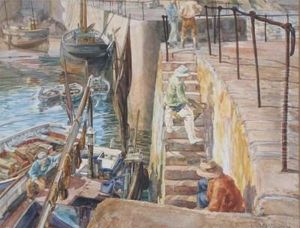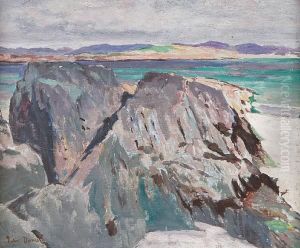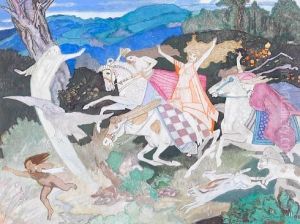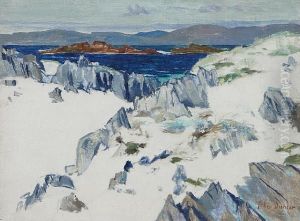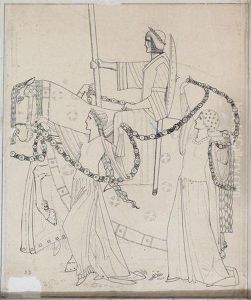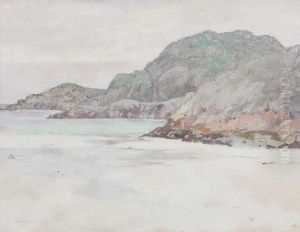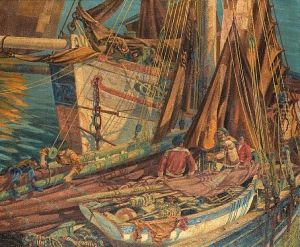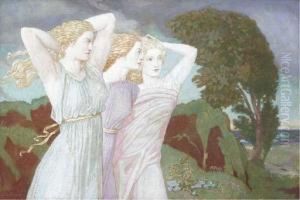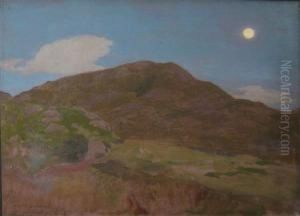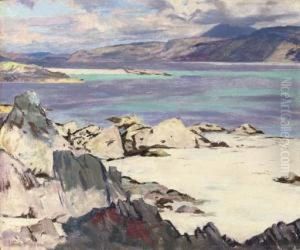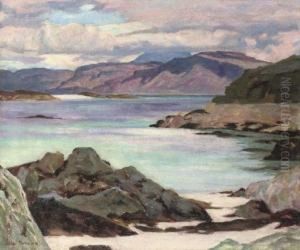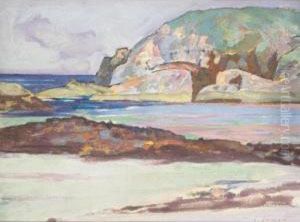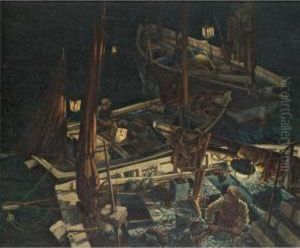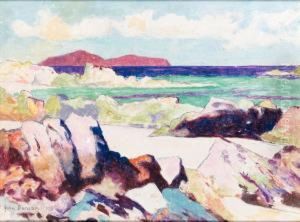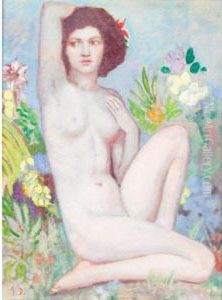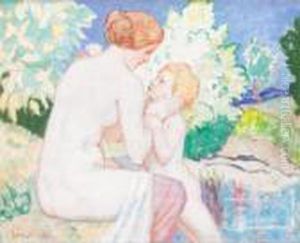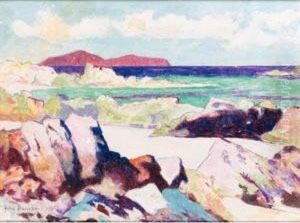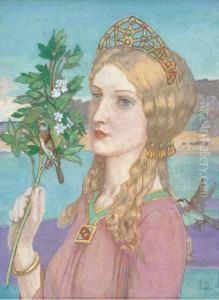John Mckirdy Duncan Paintings
John Mckirdy Duncan was a Scottish painter and one of the leading figures in the Celtic Revival movement in Scottish art. Born on June 21, 1866, in Dundee, Scotland, Duncan began his artistic education at the Dundee School of Art before continuing his studies at the Antwerp Academy and then in Düsseldorf.
Duncan's early work was influenced by the symbolism and mythological themes prevalent in the art of the late 19th century. He was particularly inspired by the Arts and Crafts Movement and the Pre-Raphaelite Brotherhood, which is evident in his meticulous attention to detail and his use of vibrant colors.
Throughout his career, Duncan became known for his work that often explored themes from Celtic mythology and Scottish folklore. His paintings are characterized by their dreamlike quality and often feature heroic figures and enchanting landscapes. One of his most famous works is 'The Riders of the Sidhe' (1911), which showcases his fascination with the supernatural and the otherworldly.
In 1897, Duncan was commissioned to decorate the walls of the great hall in the new Scottish National Portrait Gallery. His murals for the gallery include depictions of historical Scottish figures and events, which further cemented his reputation as a painter who deeply engaged with his Scottish heritage.
Apart from painting, Duncan also worked on stained glass designs, book illustrations, and decorative art. His style continued to evolve throughout his life, but he remained dedicated to the revival and interpretation of Celtic and Scottish themes.
John Mckirdy Duncan passed away on December 3, 1945. Despite not being as widely recognized as some of his contemporaries, Duncan's work has been appreciated for its mystical and romantic qualities and has been influential in Scottish art, contributing to a resurgence of interest in Scotland's cultural history.
